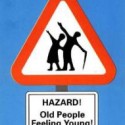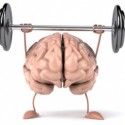In an article preceding this series we suggested that a simplified questionnaire, which takes less than a minute to carry out, could help you identify early warning signs of pre-frailty. More importantly we provided advice about what to do if you obtained any positive responses to the questions.
In part one of this series we introduced you to James Fries who in the 1980s established the concept of ‘compression of morbidity’. In other words by adopting healthier lifestyle habits we could postpone the process of ageing irrespective our genetic make-up.
If everyone had followed his advice potentially more of us would retain our vigor, well being and independence as we aged. And he and subsequent researchers provided the evidence that this was achievable.
Unfortunately current research over 30 years later is still reporting that, although retirement age is increasing, for many of us this signifies a rapid decline in our health and well being.
Why? Many of us have still not adopted those health style habits particularly when it comes to being active and maintaining a healthy weight.
In part two of the series we showed you the evidence that the amount of time we spend being sedentary begins to increase in our 40s and continues to do so as we age.
Not only is sedentary behavior considered to by the World Health Organisation to be as lethal as smoking or obesity, it is also a parameter of being frail or pre-frail, the prevalence of which also increases around 50 years of age.
How do we know how to measure pre-frailty?
Linda Fried and her co-researchers in The John Hopkins Center on Ageing & Health in the USA were one of the first groups to define and describe the characteristics what she called ‘the phenotype’ of Frailty
These 5 criteria form the basis for the simplified screening questionnaire mentioned above.
Three of five criteria include an unintentional weight loss of more than 10lbs over the previous 12 months, self-reported exhaustion where people had a feeling that almost any activity was taking more effort and/or they had lost their ability ‘to get going’; and thirdly they had a lower than normal energy expenditure over a 7 day period.
The fourth parameter was slowness as measured by a timed walk over a distance of 4.57 metres at a ‘usual pace’ and adjusted for gender and height. You can easily test yourself over a distance of 8 or 16 feet by following the advice in part one of this series.
The fifth and last parameter tested strength using a hand-grip dynamometer with results adjusted for gender and height.
In an Irish study published in 2013 a quick and easy way to measure basic strength, the TUG Test, was found to be almost as accurate as measuring Grip strength.
Are you ‘robust’?: the Timed up and Go Test, (TUG Test) can help you find out.
All you need is a chair with arm rests. This should be placed so that there is a distance of 3 metres (10 feet) in front of it. You will need a friend or partner who can time you.
- Start by sitting in the chair.
- On the word “go” get up and walk forward 3 metres, turn and return to the sitting position. The time starts from the sitting position and stops when reseated.
Interpretation:
- Time less than 8 seconds: Robust (score zero on the frailty questionnaire)
- > 8 seconds < 14 seconds: May be an indicator of Pre-frailty (score ½ )
- ≥ 14 seconds: May be an indicator of Frailty (score 1)
Key points:
- We can postpone the onset and duration of disability by adopting healthier lifestyle habits.
- These include regular exercise, attention to diet and weight, and a sensible approach to drinking alcohol. Even if you only achieve 2 or 3 of these healthy habits you may still realize significant benefits.
- In order for these habits to be effective we need to start to practice them as soon as possible, certainly in our 40s; but it is never too late.
- Even in our 50s many of us do not tap into our own potential for healing, health and well-being partly as a result of becoming increasingly sedentary.
- Both muscle strength and muscle mass decline with age and will do so more rapidly as a result of inactivity.
- Combined aerobic and resistance exercise can prevent this decline.
- Balance and flexibility exercises which can be done at home have been shown to reduce the risk of falls and injury.
- The evidence is that the fitter we are before we reach older age, the more likely we can postpone the risk of becoming frail.
- Becoming more active is just a habit like any other.







